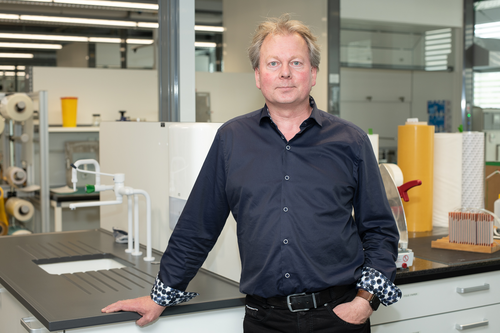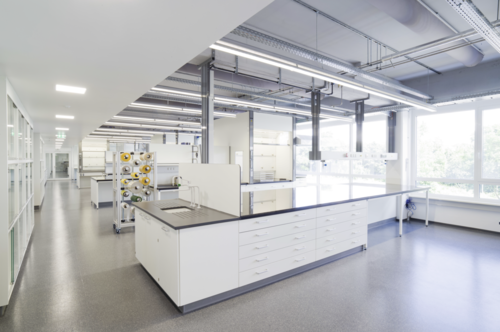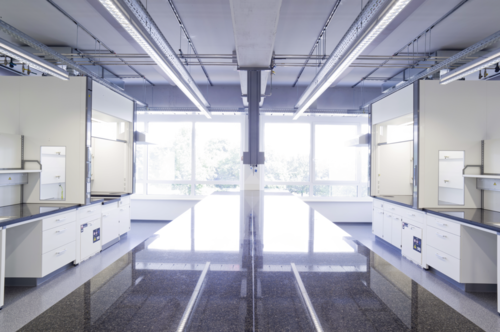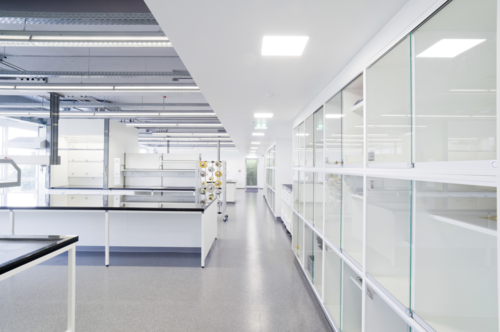Meet with us the passionate Bonding Engineer for a conversation to learn more about the research and development of adhesives at Lohmann and to track down one or the other trend.

With pleasure! Our different types of adhesives can be divided into four categories: Water-based adhesives, solvent-based adhesives – such as acrylates or rubbers –, solvent-free adhesives (e.g. PSA hotmelts or UV acrylates) as well as reactive adhesive systems.
Is this division into four types complete and final? Or could new developments potentially expand the categories?
Basically, we want to develop even more in the direction of functional systems, i.e. mixed systems of adhesives or carriers and materials that provide adhesive products with additional functions. We are increasingly working in the field of heat- or electrically conductive and flame-retardant systems and would like to make the leap to even more sophisticated systems!
Does Lohmann mainly develop its own products? And what are the advantages?
We develop about 50% of the acrylates ourselves and therefore put a lot of energy into this area. All other adhesives are purchased in the form of raw materials or basic adhesives, but we refine and mix them ourselves. So we formulate "to the end". This is also the big advantage: we have a complete understanding of these products and can adapt them to the needs of our customers at any point. In other words: we can work very freely and creatively. This applies not only to the adhesive formulation, but also to carrier materials such as foams and films: here we research and work very closely with excellent suppliers.
You were just talking about customer requests. What place do these take in your development process? Are they always the "triggers"? Or does your research subsequently result in a concrete application possibility?
Both are possible. Following a customer request, i.e. according to a "market pull", we respond to certain needs and requirements. What should the product be able to do? For this purpose we closely coordinate with the product experts of our APM (Application & Product Management) department. But we also work on new developments in cooperation with various institutes and universities. This is where we can give free rein to our passion as "Bonding Engineers": whether new substrates, adhesives or functional systems. This part of our work naturally creates potential for the development of new fields of application or the acquisition of completely new customers. Our suppliers are also an important part of innovation. Because the good relationship with them ensures that we are often involved in their exciting new developments right from the start.
Can you tell us more about the cooperation with institutes and universities?
Of course this can look quite different. At the moment we are working with various partners on several projects that are partly funded at regional level and partly by European funds. These projects are concerned with the development of even more sustainable and environmentally friendly adhesive products and the use of alternative coating technologies to reduce solvents or within the scope of certain medical topics. More information can be found via Research and Funding at Lohmann
You like to speak in the plural – how does the daily work routine look like for you and your team? What awaits a visitor to R&D at Lohmann?
Surprises! There really is no pattern. We are organized in project work: New developments for special customers, the market or the optimization of our products, cheaper raw materials. It never gets boring. I like to say: Our work can be planned – but it is not predictable. And that is exactly the beauty of it.
What can you tell us about your typical work environment?
Of course, it's mainly the laboratories. In the Technology Center, which was inaugurated in 2016, we have state-of-the-art technology, designed according to a natural development process: from one side of the laboratory to the other you will find stations for polymerization, formulation, coating, lamination, cutting, testing, and an optional one for shipping to customers or clients. Everything can be cleaned separately, which became especially important during the Covid-19 pandemic. We maintain a very efficient and high standard at Lohmann – this makes our work fun!
 |
 |
 |
However, product development does not only take place in laboratories – it is more computer- and data-driven than ever. We are also very well equipped for this. We use data that we generate or have generated in the past (over many years!) to understand and optimize our products even better and to design new developments better and faster. The maintenance of our databases and the use of intelligent software are invaluably important for our work. I gave a presentation about the first promising approaches to the use of AI (artificial intelligence) in February in Amsterdam, which was received very positively.
Will you tell us some of your latest developments?
Well, of course there are some. UV-LUX might already be known to many people – the UV-activatable adhesive tape with color change was even a worldwide novelty! I could also mention here a heat conductive adhesive tape from the functional systems sector, developed for the automotive industry. There is also something exciting in the pipeline for the increasingly complex requirements in the printing industry: a plate mounting tape, specially developed for even better adhesion to the sleeve. Edge-lifting can thus be avoided and process reliability increased.
Where is the trend in adhesive formulation heading?
Similar to other industries, we are also moving very clearly and decisively in the direction of sustainability – which is evident in water-based adhesive systems, for example, but also in reusable adhesive products. Lohmann has recently made a major investment in this future-oriented technology: At our site in Neuwied a new coating plant for the processing of PSA hotmelts is currently under construction. Specially designed for our needs and therefore unique worldwide. Also the already mentioned functional systems which extend the properties of an adhesive product ("more than just bonding") are to be mentioned here. And, of course there is the computer-aided, data-driven development. We are practically "in the middle" of what we would call "trends".